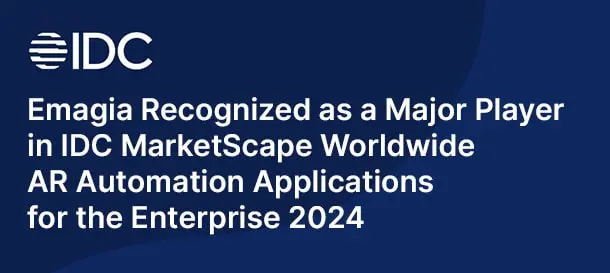In the intricate machinery of any business, the moment a customer decides to buy is a pivotal one. This initial spark, however, must be meticulously captured, processed, and fulfilled to truly translate into revenue and customer satisfaction. This is where the order entry solution comes into play – a critical, often underestimated, component that forms the very backbone of the “order-to-cash” cycle and dictates the efficiency of your entire operation.
Gone are the days when order entry was a simple, manual task. Today’s dynamic markets demand speed, accuracy, and seamless integration. A flawed or inefficient order entry process can lead to a cascade of problems: delayed shipments, billing errors, frustrated customers, and ultimately, lost revenue. Conversely, a well-implemented and optimized order entry solution can be a powerful catalyst for growth, enhancing customer experience, streamlining operations, and accelerating cash flow.
This comprehensive guide will delve deep into the world of order entry solutions, exploring their fundamental role, key features, and the profound benefits they offer. We will examine how modern automated order entry transforms traditional challenges, discuss the various types of systems available, and provide insights into selecting the right order management system for your business. By understanding and mastering this crucial aspect of your operations, you can unlock greater efficiency, foster stronger customer relationships, and drive sustainable business excellence.
Understanding the Core: What is an Order Entry Solution?
At its essence, an order entry solution refers to the software, systems, and processes that facilitate the accurate and efficient capture of customer orders. It’s the digital gateway through which customer requests for products or services are formally recorded and initiated into a company’s operational workflow. This crucial step marks the beginning of the journey from a customer’s intent to a delivered product and, eventually, collected payment.
Defining the Purpose of Order Entry Software
The primary purpose of an order entry solution is to standardize and streamline the process of receiving and documenting customer orders. This includes capturing all necessary details: customer information, ordered items, quantities, pricing, shipping instructions, and payment terms. By centralizing this information, the solution ensures that all subsequent departments—from inventory and fulfillment to billing and customer service—have access to accurate and consistent data.
In the broader context of business operations, an effective order entry solution is the critical first step in the entire “order-to-cash” cycle. It lays the foundation for efficient order processing automation, which directly impacts revenue recognition and cash flow. Without a robust system, manual errors can proliferate, leading to costly rework, customer dissatisfaction, and delays in revenue realization.
The Pillars of Efficiency: Key Features of a Modern Order Entry Solution
A truly effective order entry solution is equipped with a range of features designed to maximize accuracy, speed, and integration. These capabilities transform the traditional, often cumbersome, process into a seamless operation.
1. Streamlined Order Capture and Validation
The ability to quickly and accurately capture orders is paramount. A modern order entry solution offers:
- Multiple Input Channels: Support for various order sources, including online portals, EDI (Electronic Data Interchange), phone, email, and direct sales force entry. This flexibility ensures that no order is missed, regardless of how it’s placed.
- Automated Data Validation: Real-time checks to ensure data accuracy at the point of entry. This includes validating customer information, product codes, pricing, and quantity, preventing common errors before they propagate through the system. This is a core aspect of automated order entry.
- Configurable Order Forms: Customizable templates that guide users through the order capture process, ensuring all necessary fields are completed and reducing manual omissions.
This initial validation is crucial for minimizing downstream errors and ensuring smooth sales order processing.
2. Dynamic Pricing and Discount Management
Accurate pricing is fundamental to profitability and customer trust. A robust order entry solution provides:
- Automated Price Lookup: Instantly retrieves correct product pricing based on customer contracts, volume discounts, promotional offers, and regional variations.
- Discount Application: Automatically applies eligible discounts and promotions, preventing manual miscalculations and ensuring consistent pricing across all orders.
- Tiered Pricing and Custom Pricing Rules: Supports complex pricing structures, allowing businesses to cater to diverse customer segments and sales strategies.
Precise pricing at the point of order entry prevents billing disputes and protects profit margins, making it a vital component of a comprehensive order management system.
3. Real-time Inventory and Availability Checks
Nothing frustrates a customer more than ordering an item that’s out of stock. A powerful order entry solution integrates with inventory systems to offer:
- Real-time Stock Visibility: Provides immediate insight into current inventory levels across all warehouses or locations.
- Availability Commitments: Automatically confirms product availability and estimated delivery dates at the time of order placement, preventing backorders and managing customer expectations effectively.
- Allocated Inventory Management: Allows for the reservation of stock for specific orders, ensuring that committed products are not accidentally sold elsewhere.
This integration is crucial for efficient order fulfillment software and maintaining customer satisfaction.
4. Integrated Shipping and Logistics Coordination
Beyond simply taking the order, a comprehensive order entry solution facilitates the next steps in the fulfillment process:
- Shipping Method Selection: Allows for the selection of preferred shipping carriers and methods based on customer preference, cost, or delivery urgency.
- Automated Shipping Label Generation: Integrates with shipping carriers to automatically generate labels and tracking numbers, reducing manual effort and errors.
- Freight Cost Calculation: Provides estimated or actual freight costs at the time of order, aiding in accurate invoicing and customer communication.
Seamless integration with logistics partners streamlines the entire order to cash cycle.
5. Customer Data Management and History
A good order entry solution acts as a central repository for customer information, enhancing the overall customer order management experience:
- Centralized Customer Profiles: Stores comprehensive customer data, including contact details, billing and shipping addresses, payment terms, and past order history.
- Order History Access: Provides quick access to a customer’s entire order history, enabling personalized service and efficient handling of returns or inquiries.
- Credit Limit Checks: Integrates with credit management systems to verify customer credit limits before accepting orders on credit, mitigating financial risk.
This consolidated view supports better customer service and informed decision-making.
6. Reporting and Analytics for Performance Insights
To continuously improve, businesses need data-driven insights. An effective order entry solution offers:
- Customizable Reports: Generate reports on order volume, sales trends, average order value, order accuracy rates, and fulfillment times.
- Performance Dashboards: Provide real-time dashboards that visualize key metrics, allowing managers to monitor performance and identify bottlenecks.
- Data Export Capabilities: Allows for easy export of order data for further analysis in business intelligence tools.
These analytical capabilities are vital for optimizing order processing automation and overall business strategy.
The Transformative Benefits of a Robust Order Entry Solution
Investing in a modern order entry solution yields far-reaching benefits that impact every facet of a business, from operational efficiency to customer loyalty and financial health.
1. Enhanced Accuracy and Reduced Errors
Manual order entry is inherently prone to human error, leading to incorrect orders, mispricing, and shipping mistakes. An automated order entry system significantly reduces these errors through:
- Data Validation: Real-time checks and standardized input fields minimize incorrect data entry.
- Automated Calculations: Eliminates mathematical errors in pricing, discounts, and taxes.
- Reduced Rework: Fewer errors mean less time spent on corrections, re-shipping, and customer service complaints.
This precision is fundamental to efficient order processing and customer satisfaction.
2. Improved Operational Efficiency and Productivity
Automation frees up valuable employee time and resources. A powerful order entry solution can:
- Accelerate Order Processing: Orders are captured and moved to fulfillment much faster, reducing lead times.
- Streamline Workflows: Automates routing of orders to appropriate departments (warehouse, billing), eliminating manual handoffs and delays.
- Boost Employee Productivity: Allows staff to focus on more strategic tasks rather than repetitive data entry, improving overall efficiency across the order to cash cycle team.
This translates directly into significant time and cost savings for the business.
3. Elevated Customer Satisfaction and Experience
A smooth and accurate order experience is paramount for customer loyalty. An effective order entry solution contributes by:
- Faster Order Confirmation: Customers receive quick confirmations and accurate order details.
- Reduced Order Errors: Fewer mistakes mean customers receive exactly what they ordered, on time.
- Accurate Pricing and Billing: Eliminates billing surprises and disputes, fostering trust.
- Real-time Updates: Provides customers with accurate information on order status and shipping, enhancing transparency.
This focus on seamless customer order management builds strong, lasting relationships.
4. Accelerated Cash Flow and Revenue Recognition
The efficiency of order entry directly impacts a company’s financial health:
- Faster Invoicing: Accurate order data flows seamlessly to billing, enabling prompt invoice generation and delivery.
- Reduced Billing Disputes: Fewer errors at the order entry stage lead to fewer disputes, accelerating payment collection.
- Improved Days Sales Outstanding (DSO): Quicker order processing and accurate invoicing contribute to a lower DSO, meaning cash is collected faster.
This directly translates into healthier cash flow and more timely revenue recognition, making an order entry solution a powerful tool for financial optimization.
5. Enhanced Data Insights for Strategic Decision-Making
By centralizing and standardizing order data, a robust order entry solution provides invaluable insights:
- Sales Trend Analysis: Identify popular products, peak sales periods, and customer buying patterns.
- Inventory Optimization: Better forecasting of demand based on historical order data, leading to optimized stock levels and reduced carrying costs.
- Performance Benchmarking: Track key metrics to identify areas for operational improvement and strategic growth.
These insights empower businesses to make data-driven decisions that drive profitability and competitive advantage.
6. Scalability and Business Growth
As businesses grow, manual order entry processes quickly become unsustainable. An order entry solution provides the necessary infrastructure to scale operations:
- Handle Increased Volume: Efficiently process a higher number of orders without needing a proportional increase in manual labor.
- Support Expansion: Easily integrate new products, services, or sales channels without disrupting existing workflows.
- Adapt to Market Changes: The flexibility of modern systems allows businesses to quickly adapt to new pricing models, promotions, or fulfillment requirements.
This scalability is crucial for businesses with ambitious growth plans.
Types of Order Entry Solutions: Choosing the Right Fit
The landscape of order entry solutions is diverse, ranging from basic manual methods to highly integrated, intelligent systems. Understanding the different types helps businesses choose the right fit for their specific needs and scale.
1. Manual Order Entry (Basic/Legacy Systems)
This involves recording orders using spreadsheets, paper forms, or very basic, disconnected software. While low-cost initially, it is highly prone to errors, incredibly slow, and offers minimal integration or reporting capabilities. It’s generally suitable only for very small businesses with extremely low order volumes.
2. Semi-Automated Order Entry
This category often involves a mix of digital tools that automate some aspects but still require significant manual intervention. Examples include:
- Standalone Order Entry Software: Dedicated software that captures orders but may not fully integrate with inventory, accounting, or CRM systems. Data often needs to be manually transferred between systems.
- Basic E-commerce Platforms: Online stores that capture orders but may require manual export and import into a separate fulfillment or accounting system.
These solutions offer some improvements over fully manual processes but still present challenges in data consistency and end-to-end automation.
3. Fully Integrated Order Management Systems (OMS) and ERP Solutions
This represents the most advanced and comprehensive approach to order entry solution. These systems are designed to manage the entire order lifecycle from capture to fulfillment and invoicing. Key characteristics include:
- Enterprise Resource Planning (ERP) Systems: Comprehensive software suites (e.g., SAP, Oracle, NetSuite) that integrate all core business functions, including sales, order management, inventory, purchasing, finance, and CRM. Order entry is a seamlessly integrated module within the ERP, ensuring real-time data flow across the organization.
- Dedicated Order Management Systems (OMS): Specialized software focused specifically on managing orders across multiple channels, often integrating with ERPs, e-commerce platforms, and logistics providers. An OMS offers advanced features for order routing, fulfillment optimization, and returns management.
- Cloud-Based Solutions: Increasingly, these systems are offered as Software-as-a-Service (SaaS), providing flexibility, scalability, and accessibility from anywhere.
These integrated order management systems are ideal for medium to large enterprises seeking end-to-end order processing automation and holistic business insights.
Challenges in Implementing and Optimizing an Order Entry Solution
While the benefits are clear, implementing and optimizing an order entry solution can present various challenges that businesses must be prepared to address.
1. Data Quality and Integration Complexities
One of the most significant hurdles is ensuring high-quality data across all systems. Inaccurate or inconsistent data from legacy systems can derail a new order entry solution. Furthermore, integrating the new system with existing ERP, CRM, inventory, and accounting platforms can be technically complex and time-consuming, requiring significant IT resources and expertise.
2. Resistance to Change and User Adoption
Any new system introduces changes to established workflows, which can be met with resistance from employees. Lack of proper training, unclear communication about the benefits, or a perceived increase in workload can lead to low user adoption, undermining the effectiveness of the order entry solution. Effective change management is crucial.
3. Customization vs. Standardization
Businesses often have unique order processing requirements that necessitate customization. However, excessive customization can increase implementation costs, complicate upgrades, and make the system harder to maintain. Finding the right balance between tailoring the order entry software to specific needs and adhering to standard best practices is a common challenge.
4. Managing Complex Pricing and Promotions
For businesses with intricate pricing models, dynamic discounts, or frequent promotional campaigns, accurately configuring and managing these rules within the order entry solution can be complex. Errors in pricing can lead to revenue leakage or customer dissatisfaction, requiring careful setup and ongoing validation.
5. Scalability and Performance Issues
As a business grows, its order entry solution must be able to handle increasing transaction volumes without performance degradation. Poorly designed or implemented systems can become bottlenecks, slowing down order processing and impacting customer experience during peak periods. Ensuring the chosen order management system can scale with future growth is vital.
6. Regulatory Compliance and Security
Handling sensitive customer data and payment information requires robust security measures and adherence to various data privacy regulations (e.g., GDPR, CCPA). An order entry solution must have built-in security features and compliance capabilities to protect against data breaches and regulatory penalties.
The Future of Order Entry: AI, Self-Service, and Hyper-Automation
The landscape of order entry solution is continuously evolving, driven by technological advancements and the increasing demand for speed, personalization, and efficiency. The future promises even more intelligent and seamless order processing.
1. AI and Machine Learning for Intelligent Order Processing
Artificial Intelligence (AI) and Machine Learning (ML) are set to revolutionize order entry solutions by enabling:
- Predictive Order Entry: AI can analyze historical data to predict customer ordering patterns, allowing businesses to proactively manage inventory and anticipate demand.
- Automated Data Extraction: AI-powered OCR (Optical Character Recognition) can automatically extract order details from unstructured documents (e.g., emailed purchase orders, faxes), significantly reducing manual data entry for order processing automation.
- Smart Validation and Fraud Detection: AI algorithms can identify anomalies or potential fraud in order details, enhancing security and accuracy.
- Personalized Recommendations: AI can suggest product upsells or cross-sells at the point of order entry, based on customer history and preferences.
This integration of AI will make order entry software more intelligent and proactive.
2. Self-Service Portals and Customer Empowerment
Customers increasingly expect the convenience of self-service. Future order entry solutions will feature:
- Enhanced Customer Portals: Robust online platforms where customers can place orders, track status, view order history, manage returns, and access billing information independently.
- Guided Ordering Experiences: Intuitive interfaces that guide customers through complex product configurations or service selections, minimizing errors.
- Mobile-First Design: Optimized experiences for mobile devices, allowing customers to place and manage orders on the go, enhancing customer order management.
This shift empowers customers while reducing the burden on internal teams.
3. Hyper-Automation Across the Order-to-Cash Cycle
The trend is towards end-to-end automation, where the order entry solution is just the first step in a fully automated revenue cycle. This includes:
- Seamless Integration: Deeper integration with ERP, CRM, inventory, logistics, and Accounts Receivable systems, creating a single, unified workflow from order placement to cash collection.
- Robotic Process Automation (RPA): Use of RPA bots to automate repetitive, rule-based tasks within the order entry process, such as data transfer between non-integrated systems.
- Touchless Order Processing: The ultimate goal, where orders flow through the entire system with minimal or no human intervention, from entry to fulfillment and invoicing.
This holistic approach to order processing automation will drive unprecedented efficiency and accuracy.
4. Real-time Visibility and Predictive Analytics
Future order entry solutions will offer even more advanced analytics:
- Real-time Performance Dashboards: Live monitoring of order status, fulfillment progress, and potential bottlenecks.
- Predictive Analytics for Fulfillment: Forecasting potential delays in shipping or inventory shortages based on current order volumes and historical data.
- Revenue Forecasting: More accurate revenue projections driven by real-time order data and predictive models.
These capabilities will transform reactive management into proactive strategic planning for order fulfillment software and beyond.
Emagia’s Role in Optimizing Your Order Entry to Cash Cycle
In the quest for business excellence, a seamless order entry solution is paramount, forming the critical first step in the entire revenue cycle. Emagia, a leader in AI-powered Order-to-Cash (O2C) automation, provides comprehensive solutions that significantly enhance and integrate with your existing order entry solution, ensuring a smooth transition from order placement to cash collection.
Emagia’s platform leverages advanced Artificial Intelligence and Machine Learning to streamline the downstream processes that rely heavily on accurate order entry. By automating intelligent cash application, Emagia ensures that payments are swiftly and precisely matched to invoices generated from your order management system. This eliminates reconciliation bottlenecks and significantly accelerates cash flow. Furthermore, Emagia’s AI-driven collections capabilities ensure that follow-ups are timely and personalized, reducing Days Sales Outstanding (DSO) and minimizing billing disputes that often originate from initial order inaccuracies.
By providing real-time visibility into the entire order-to-cash process, from the moment an order is entered to the final cash receipt, Emagia empowers businesses to identify and resolve issues quickly. This holistic approach not only improves operational efficiency and reduces manual effort but also enhances the overall customer experience by ensuring accuracy and transparency throughout their purchasing journey. Emagia transforms the entire revenue cycle, making your order entry solution a more powerful driver of financial health and customer satisfaction.
FAQ: Frequently Asked Questions About Order Entry Solutions
What is an order entry solution?
An order entry solution is a system or software used by businesses to accurately capture, record, and process customer orders for products or services. It is the initial step in the order-to-cash cycle, ensuring all necessary details are documented for fulfillment, shipping, and billing.
How does an order entry solution improve efficiency?
An order entry solution improves efficiency by automating data capture and validation, streamlining workflows, reducing manual errors, and integrating with other business systems like inventory and accounting. This accelerates order processing, reduces rework, and frees up staff for more strategic tasks.
What are the key features to look for in an order entry software?
Key features in order entry software include multiple input channels (e.g., online, EDI, manual), automated data validation, dynamic pricing and discount management, real-time inventory checks, integration with shipping and logistics, comprehensive customer data management, and robust reporting and analytics capabilities.
How does an order entry solution impact customer satisfaction?
An order entry solution significantly impacts customer satisfaction by ensuring order accuracy, providing real-time updates on order status, and delivering accurate pricing and billing. Fewer errors, faster processing, and transparent communication lead to a smoother purchasing experience and increased customer loyalty.
What is the difference between order entry and order management?
Order entry is the initial step of capturing and recording a customer’s order. Order management is a broader process that encompasses the entire lifecycle of an order, from entry through fulfillment, shipping, invoicing, and returns. An order management system (OMS) typically includes order entry as one of its core functions.
Can an order entry solution help with cash flow?
Yes, an order entry solution directly helps with cash flow by ensuring accurate order data flows seamlessly to billing, enabling prompt invoicing. Fewer errors at the order entry stage lead to fewer billing disputes, which accelerates payment collection and improves Days Sales Outstanding (DSO).
What role does automation play in order entry?
Automation in order entry, often referred to as automated order entry or order processing automation, uses technology to reduce manual intervention. This includes automated data validation, real-time inventory checks, automatic pricing application, and seamless data transfer to downstream systems, leading to faster, more accurate, and more efficient order processing.
Conclusion: The Strategic Imperative of a Modern Order Entry Solution
In conclusion, a robust and intelligent order entry solution is no longer merely an operational tool; it is a strategic imperative for businesses striving for excellence in today’s competitive landscape. Its influence extends far beyond the initial capture of a sale, fundamentally shaping operational efficiency, financial health, and the all-important customer experience.
By embracing automated order entry, leveraging advanced features for real-time validation, inventory management, and dynamic pricing, and integrating seamlessly with broader order management system and ERP platforms, companies can transform their entire order-to-cash cycle. This investment not only minimizes errors and boosts productivity but also accelerates cash flow, fosters deeper customer loyalty, and provides invaluable insights for future growth. Mastering your order entry solution is truly the key to moving from click to cash with unparalleled efficiency and sustained business success.



